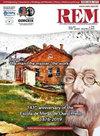A Geostatistical Framework for Estimating Compositional Data Avoiding Bias in Back-transformation
Q3 Earth and Planetary Sciences
引用次数: 4
Abstract
Estimation of some mineral deposits involves chemical species or a granulometric mass balance that constitute a closed constant sum (e.g., 100%). Data that add up to a constant are known as compositional data (CODA). Classical geostatistical estimation methods (e.g., kriging) are not satisfactory when CODA are used, since bias is expected when estimated mean block values are back-transformed to the original space. CODA methods use nonlinear transformations, and when the transformed data are interpolated, they cannot be returned directly to the space of the original data. If these averages are back-transformed using the inverse function, bias is generated. To avoid this bias, this article proposes geostatistical simulation of the isometric logratio ratio (ilr) transformations back-transforming point simulated values (instead of block estimations), with the averaging being postponed to the end of the process. The results show that, in addition to maintaining the mass balance and the correlations among the variables, the means (E-types) of the simulations satisfactorily reproduce the statistical characteristics of the grades without any sort of bias. A complete case study of a major bauxite deposit illustrates the methodology.一种避免反变换偏倚的成分数据估计地质统计学框架
对某些矿床的估计涉及化学物质或构成封闭常数和的颗粒质量平衡(例如,100%)。加起来成为常量的数据称为组合数据(CODA)。当使用CODA时,经典的地质统计估计方法(例如克里格)是不令人满意的,因为当估计的平均块值被反变换到原始空间时,预计会有偏差。CODA方法使用非线性变换,当变换后的数据被插值时,它们不能直接返回到原始数据的空间。如果使用逆函数对这些平均值进行反向变换,则会产生偏差。为了避免这种偏差,本文提出了等距logratio ratio (ilr)变换的地质统计模拟,反演点模拟值(而不是块估计),并将平均推迟到过程的最后。结果表明,模拟的均值(e型)除了保持质量平衡和各变量之间的相关性外,还能很好地再现各品位的统计特征,没有任何偏差。一个主要铝土矿矿床的完整案例研究说明了该方法。
本文章由计算机程序翻译,如有差异,请以英文原文为准。
求助全文
约1分钟内获得全文
求助全文
来源期刊

Rem-Revista Escola De Minas
工程技术-工程:土木
自引率
0.00%
发文量
0
审稿时长
6-12 weeks
期刊介绍:
REM – International Engineering Journal (antigua REM – Revista Escola de Minas) es la primera revista técnica de Sudamérica. Fue fundada en enero de 1936 por los estudiantes de la Escuela de Minas de Ouro Preto y desde entonces se ha especializado en la publicación de artículos en las áreas de la Ingeniería Civil, Geología, Metalurgia y Materiales y, Minería y Mecánica y Energía.
Su objetivo es servir como un medio de publicación para los trabajos técnicos y científicos originales de investigadores nacionales y extranjeros en esas áreas. Contribuciones originales (artículos y cartas) son aceptadas. Artículos de revisión dependen de la invitación y/o análisis de los Editores.
El envío de artículos para su publicación implica que el trabajo no ha sido publicado previamente, que no está siendo presentado para su publicación en otra revista y no se publicará en otro lugar, en la misma forma, sin el permiso, por escrito, de los Editores/Autores.
 求助内容:
求助内容: 应助结果提醒方式:
应助结果提醒方式:


